
Dipeeka Kulkarni is a talented co-founder and interior designer, known for her innovative approach to creating captivating spaces. With a keen eye for detail and...
Designing a modular kitchen entails meticulous planning and attention to detail to ensure functionality, aesthetics, and ease of maintenance. Here are key factors to consider:
The Golden Triangle Rule: Efficient Layout Design
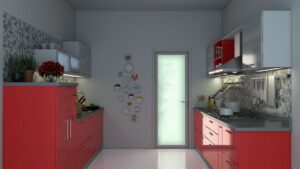
The layout of your modular kitchen plays a pivotal role in its functionality. Adhering to the Golden Triangle Rule, which involves positioning the sink, stove, and refrigerator within a gap of four to nine feet, creates an efficient work triangle. This arrangement optimizes movement and workflow, enhancing the overall cooking experience.
Incorporating Low-Maintenance Materials
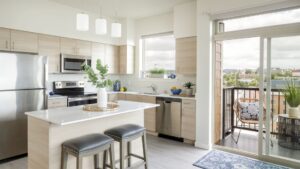
Selecting low-maintenance materials is essential for hassle-free upkeep. Opt for materials such as wood or glass for cabinets, stainless steel sinks, and marble countertops. These materials not only add elegance to your kitchen but also simplify cleaning routines, ensuring a pristine appearance with minimal effort.
Tailoring the Kitchen Layout to Suit Your Needs
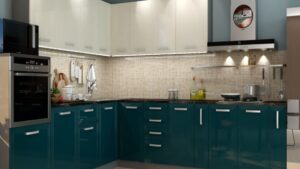
When choosing a layout for your modular kitchen, consider factors such as kitchen size and workflow. Whether it’s a straight, L-shaped, or U-shaped layout, ensure it complements your space and adheres to the Golden Triangle Rule. A well-planned layout facilitates smooth movement and efficient utilization of space.
Maximizing Storage Efficiency
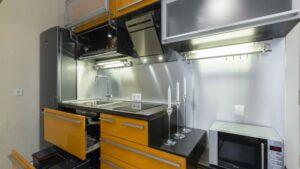
Effective storage solutions are integral to a well-designed kitchen. Analyze your storage requirements and customize compartments accordingly. Dedicate specific areas for spices, utensils, and appliances to maintain organization. Explore options like sectional drawers and pull-out pantries to optimize storage space without compromising functionality.
Selecting Premium-Quality Materials
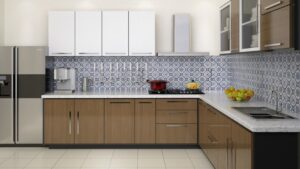
Investing in high-quality materials is paramount for durability and longevity. Opt for materials like BWR plywood for cabinets, as they offer excellent resistance to moisture and wear. Granite and quartz countertops provide durability and aesthetic appeal, while steering clear of porous materials like marble helps prevent staining and damage.
Strategic Appliance Placement
Carefully plan the placement of appliances to ensure seamless integration with the kitchen layout. Built-in appliances not only save space but also contribute to a sleek and cohesive design. Ensure adequate plug points are strategically positioned to accommodate various kitchen appliances, enhancing both functionality and aesthetics.
Prioritizing Proper Ventilation
Proper ventilation is crucial for maintaining a healthy indoor environment in your kitchen. Install chimneys or exhaust systems to effectively remove cooking fumes, smoke, and odors. Good ventilation not only improves air quality but also prevents the buildup of moisture and potential damage to kitchen surfaces.
In conclusion, designing a modular kitchen involves careful consideration of layout, materials, storage solutions, appliance integration, and ventilation. By prioritizing these aspects, you can create a functional, stylish, and practical space that enhances your cooking experience and adds value to your home.
